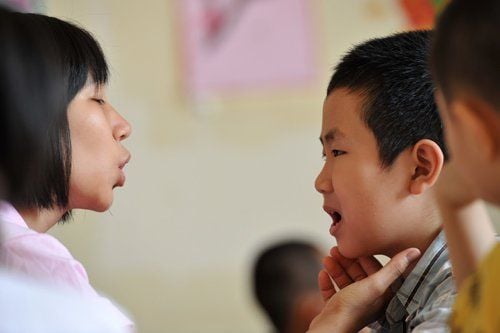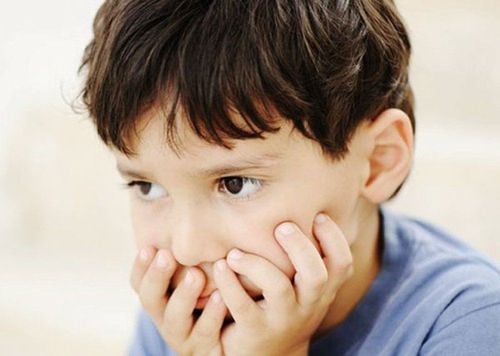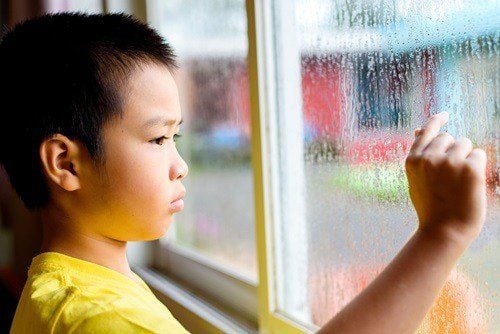This is an automatically translated article.
Normal healthy children develop language very quickly. However, in reality, there are children who do not develop language normally with age. These children have language disorders and need speech rehabilitation therapy.
1. What is language disorder in children?
Usually, when the baby is 2-3 months old, the baby has started to vocalize the pharynx. From 7 to 9 months old, babies will babble and learn to speak. From 12 to 15 months old, babies can say a few simple words. By the age of 2-3 years, children can speak from short sentences to long sentences.
There are 2 types of language disorders in children: language receptive disorders (delayed understanding of other people's speech) and pronunciation disorders (children have difficulty speaking common words and sentences). Speech disorders include slurred speech, slurred speech, slurred speech, slurred speech, or abnormal speech patterns. If the child suffers from the above problems and parents do not encourage the child to communicate, the child will easily become less confident and less integrated.
Other language disorders such as: Children often speak on their own, make parody words, pronounce nonsense, speak indiscriminately, ... mainly due to developmental disabilities or psychological disorders. This condition needs to be detected early, for the child to see a doctor promptly.
2. Manifestations of children with language disorders
Children with language disorders often have no specific symptoms. There are only some signs that a child may have a language disorder such as:
The child does not seem to listen when someone is talking to; Children don't care when someone reads to them; Children do not understand long and complex sentences; Children do not follow the instructions of their parents.

Một số dấu hiệu giúp nhận biế trẻ bị rối loạn ngôn ngữ
3. Rehabilitation measures for children with language disorders
3.1 Principle Children may experience communication difficulties such as: language delay, speech delay; poor speech or muteness due to hearing loss ; lisp and stuttering; Difficulty speaking and slurred speech in children with cerebral palsy. The principles of language rehabilitation for children are as follows:
Medicine - rehabilitation
Promote all communication abilities, including verbal, written or action, body language; Should sit low so that the adult's face is level with the child's so that the child can easily observe the movement of the mouth when pronouncing; Play with children to prolong the teaching of pronunciation; Speak slowly and clearly so that children can imitate adult mouth movements. It is recommended to repeat the words that children are learning and making progress over and over again to create habits and opportunities to practice those sounds more; Use other forms of non-verbal communication to support verbal communication: Facial expressions, body movements, drawings, handwriting,...; When communicating with children with speech disabilities, it is necessary to promote their imagination, play attractive games, change communication topics; Gradually increase children's vocabulary: Start by teaching children to make sounds, then single words, combine single words into short sentences and then long sentences. Education
Inclusive education: Most children with language disorders can follow inclusive education with other healthy children. However, teachers need to have skills to teach and communicate with children; Special education: In order for children with hearing and speaking difficulties to be able to access inclusive education, it is necessary to support children with some skills such as: General communication (signs and finger letters), listening and speaking practice and toxic. Social
Play: Children with hearing and speech difficulties will have many opportunities to communicate through play with other children; Club of like-minded people: Children have the ability to exchange information, communicate using synthetic language or sign language. Career
Vocational training: Choose a career according to your ability. If listening and speaking are difficult, choose a job related to manual skills such as dancing, knitting, embroidery, sewing,...; Find a job: Need to match your abilities and aspirations. In addition, it is necessary to consider factors such as capital, location, product output,... 3.2 Rehabilitation There are different types of speech disorders and each type will have its own rehabilitation method. . Specifically:
For children with lisp
Lisp is a condition in which a child makes unclear speech sounds, making it difficult for people around him to understand. Children with lisp often have the following manifestations: Difficulty moving lips, mouth, tongue, lower jaw; making pronunciation errors; speaking slowly, speaking difficult, unclear; Short or irregular breathing. Lisp is common in children before school or in elementary school. By the time the child is about 6 years old, these pronunciation errors will be corrected as usual.

Phục hồi chức năng cho trẻ bị rối loạn ngôn ngữ
Rehabilitation for children with lisp as follows:
Teach children to move their mouth - tongue and vocal organs, including: The movement of opening the mouth wide and then closing it; stick out the long tongue forward, up and then left and right; Practice “xh”: Say the “x” sound in the word “far”, make the “x” sound as long as possible; Exhale practice: Prolong the exhalation by letting the child blow a balloon or blow a trumpet; Teach children to make sounds: See if your child says a sound that is not clear, then correct the wrong sounds: If your child has both vowels and consonants, you should start teaching them to make vowels like a, u, o, i, e , eh, oh, eh, eh. When children say vowels clearly, they switch to consonants; Teach children to make lip consonants like m, b. When the child has said that sound clearly, pair it with vowels such as ma ma, ba ba, mi mi, be be,...; Teach children to say simple words such as: Grandma, dad, baby, mother, etc. It is recommended to use pictures to teach children to say single words to make them more interested; Continue to teach children to create more difficult consonants such as dd, x, t, d, ch, c, g, kh,... Then continue to pair these consonants with other vowels like xa, ta, multi,... When the child makes these sounds clear, the parent guides the child to say single words containing these sounds such as ear, apple, bag, etc. When the child can say many single words, guide the child to pair them. words into short meaningful sentences. In the learning process, parents need to pay attention to correcting their children's sounds; Education: Children need support in the classroom and at home, need to coordinate between relatives, teachers and classmates so that children learn to speak better; Social: Attention should be paid when giving career guidance to children because some occupations may cause difficulties for children such as teachers, guides, etc. Besides, children who speak a lot of lisp often have low self-esteem and guilt, so they need attention. Psychotherapy for children. For children with stuttering
Stuttering is a disorder of speech rhythm. Usually, when speaking, there will be a longer pause between sentences, and a shorter pause between words. If when speaking there is an unusually long pause between a word, between words or between sentences, it is stuttering. Children who stutter often have pauses in their breathing. When they speak, they often have tendons and muscles that are stiff in the face, neck, and body. There are types of stuttering such as: Fitting 1 sound of a syllable; install 1 syllable; install 1 paragraph of the utterance; an extra syllable, an irregular utterance, or an irregular pause in speaking.
Rehabilitation for children with stuttering as follows:
Correcting stuttering: Practice relaxation: Before speaking, let the child take a deep breath and gently exhale for 3-5 beats. Children should be allowed to sit 1-2 times a day, for 10-15 minutes each time, practice sitting with eyes closed, breathing deeply - exhaling slowly, blowing out gently and stretching. Children should be encouraged to speak slowly and people around them should speak slowly when communicating with them, waiting for them to take the initiative to start the conversation; Correct the rhythm of speech: Instruct children to say short sentences of 2-3 words, speak slowly, and when finished speaking, they should rest to prepare the next sentence. After a while, after the stuttering has subsided, the child should be directed to say a sentence longer than 4-5 words, but should still speak slowly. And if your child stutters in certain situations or with certain people, it's important to let the child relax before interacting with the person. It is possible for children to practice speaking in that situation, looking at pictures of that person to talk, talking from slow to fast, from small to loud; Counseling of a psychologist. The specialist will talk to the child to find out the psychological cause. The exchange helps children become more confident, reduce stress when communicating; Education: Teachers need to discuss and discuss to help children reduce stress when communicating, and wait longer for children to speak slowly. In the subjects of reading or answering orally, you can choose simple problems, let the children speak in front of the class. At the same time, encourage children to be more confident. On the other hand, teachers need to instruct other children in the class not to tease children with stuttering; Social: Encourage stuttering children to participate in group activities at school or in the community so that children are more confident and have more opportunities to communicate.

Trẻ bị rối loạn ngôn ngữ ở trẻ em có thể điều trị tại nhà
4. Prevention of language disorders in children
In order to prevent or minimize language disorders in children, parents need to avoid and limit children aged 0 - 3 years from exposure to television, phones, computers, ... because this is a Children begin to build a foundation of their language abilities. At the same time, family members should strengthen children's direct communication to guide them to familiarize themselves with objects, gestures, related actions, and know how to express their needs and feelings.
Parents and family members should also encourage children's ability to speak, sing, participate in games, increase movement,... When teaching children to listen and speak, parents do not need to force children to progress right away but need to guide the child in a persistent and persistent way.
Please dial HOTLINE for more information or register for an appointment HERE. Download MyVinmec app to make appointments faster and to manage your bookings easily.













